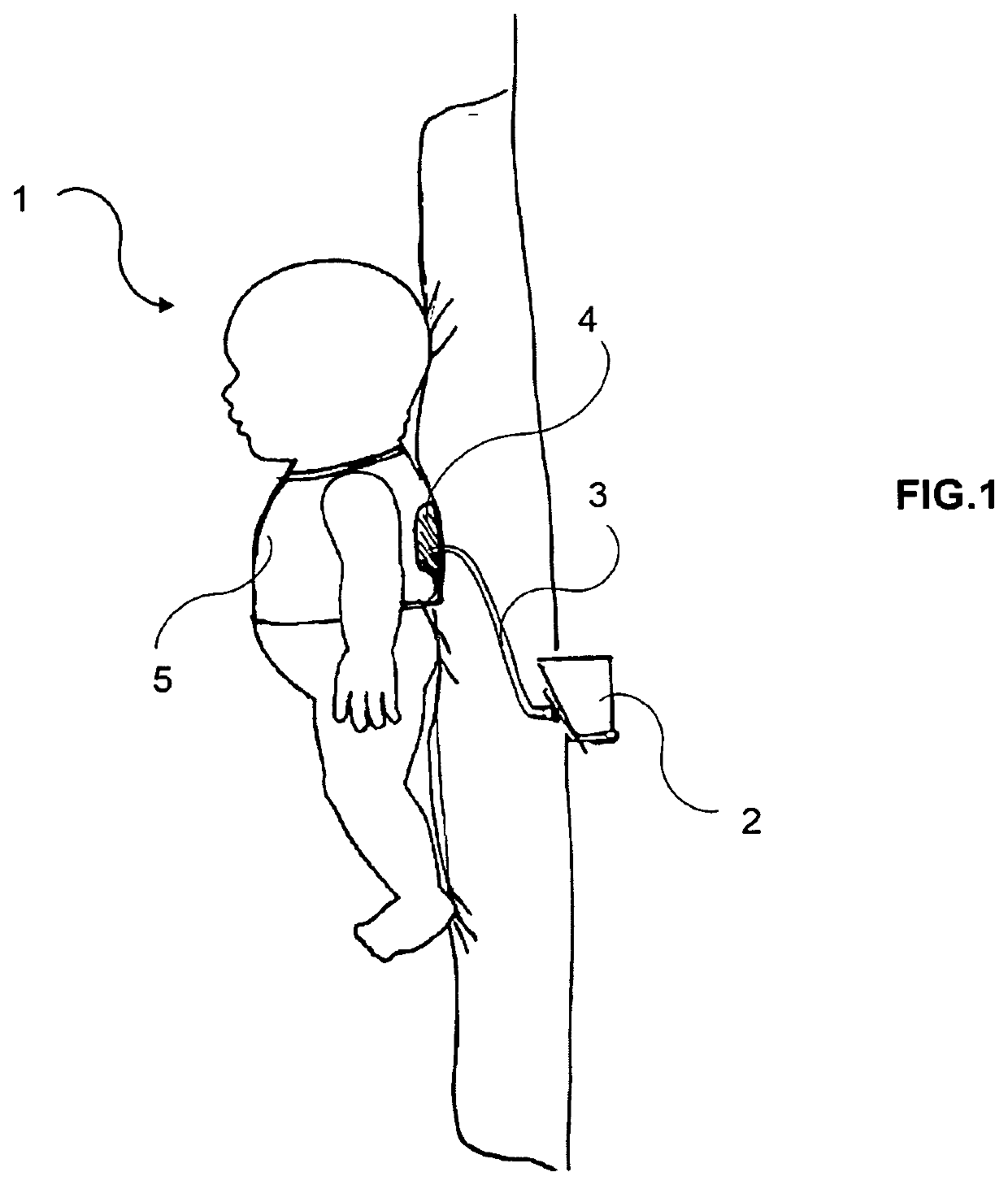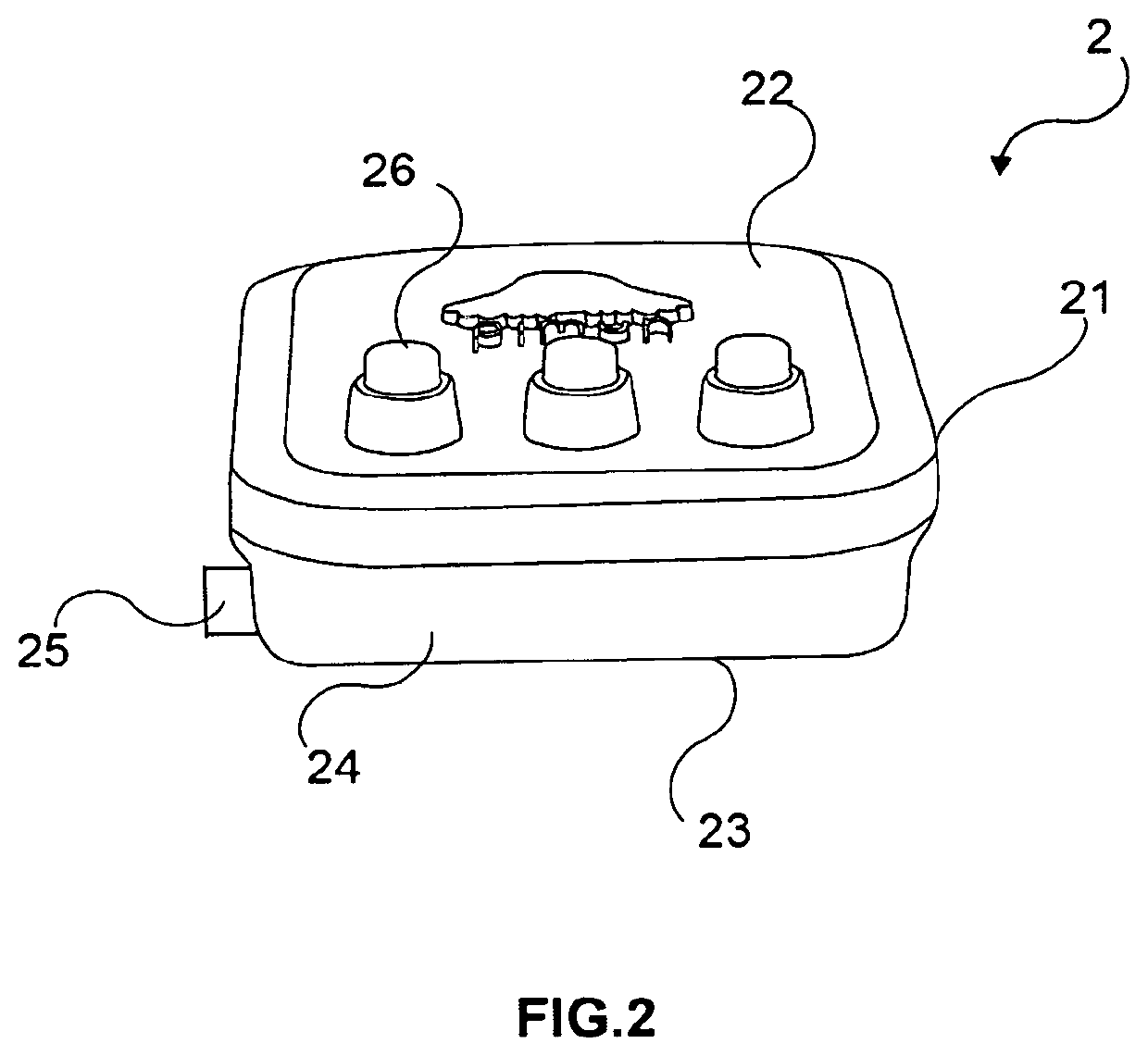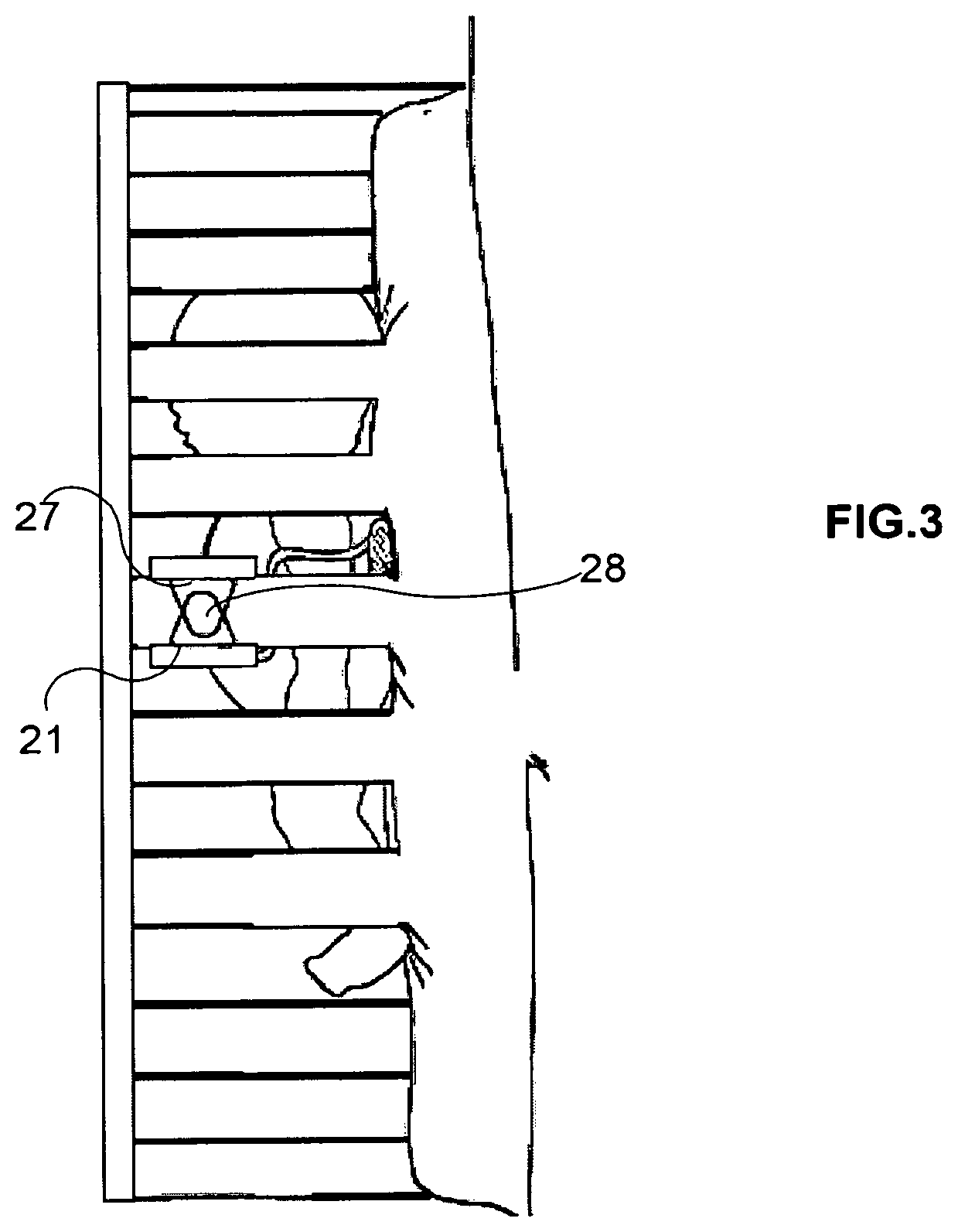Device to prevent apnea episodes in infants
a technology for infants and apnea, applied in the field of infant apnea prevention devices, can solve the problems of inability to achieve, irregular behavior and sleep patterns, and deprivation of maternal biological rhythms
- Summary
- Abstract
- Description
- Claims
- Application Information
AI Technical Summary
Benefits of technology
Problems solved by technology
Method used
Image
Examples
second embodiment
[0057]FIG. 6 shows a side view of the invention.
[0058]FIG. 7 shows an isometric view of the assembly of the breathing pattern generating means and the piece of garment.
[0059]FIG. 8 shows an elevation view of a piece of garment forming part of the device according to one embodiment.
[0060]FIG. 9 shows an elevation view of a piece of garment forming part of the device according to a second embodiment.
third embodiment
[0061]FIG. 10 shows an elevation view of a piece of garment forming part of the device according to a
fourth embodiment
[0062]FIG. 11 shows an elevation view of a piece of garment forming part of the device according to a
[0063]FIG. 12 shows an elevation view of the stimulus transmitting means comprising an inflatable / deflatable chamber and a conduit, according to an alternative embodiment.
[0064]FIG. 13 shows an isometric view of the device according to an individual embodiment.
[0065]FIG. 14 shows an isometric view of the device according to a multiple modality.
[0066]FIG. 15 shows a plan view of a unit forming part of the multiple modality of the device.
PUM
 Login to View More
Login to View More Abstract
Description
Claims
Application Information
 Login to View More
Login to View More - R&D
- Intellectual Property
- Life Sciences
- Materials
- Tech Scout
- Unparalleled Data Quality
- Higher Quality Content
- 60% Fewer Hallucinations
Browse by: Latest US Patents, China's latest patents, Technical Efficacy Thesaurus, Application Domain, Technology Topic, Popular Technical Reports.
© 2025 PatSnap. All rights reserved.Legal|Privacy policy|Modern Slavery Act Transparency Statement|Sitemap|About US| Contact US: help@patsnap.com



